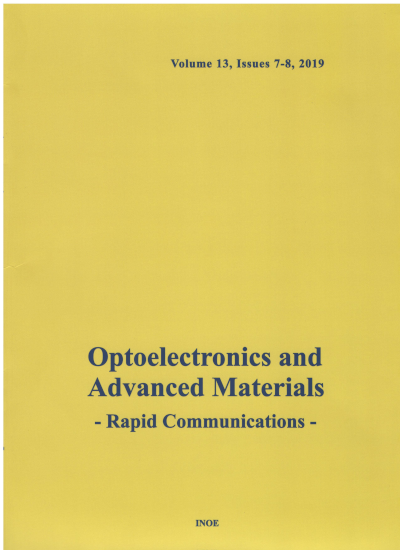Abstract
Potassium germanide chloride (KGeCl3) Perovskite material has emerged as a most attractive alternative of lead-free perovskite based solar cells with tremendous power conversions efficiency for various applications. In this paper, KGeCl3 perovskite material as active absorber layer active absorber layer and ZnO as electron transport layer (ETL) have been considered to design perovskite solar cell (PSC). In addition, hole transport material layer (HTL) of different material such as P3HT, NiO and Cu2O have also been explored to optimize performance of PV cell using SCAPS-1D simulator under AM1.5G spectrum. The performance of existing KGeCl3 based solar cell has also been compared with proposed KGeCl3 PSC with different ETM and HTM. The performance parameter such as Power conversion efficiency (PCE), fill factor (FF), open-circuit voltage (Voc) and short-circuit current density (Jsc) of the proposed KGeCl3 based PSC has been analyzed by considering different values of the thickness, and density of interfacial defects in (KGeCl3) absorber layer, temperature range and recombination rate of carriers. The proposed KGeCl3 based lead free PSC with NiO as HTM and ZnO as ETM has shown 22.53 % power conversion efficiencies (PCEs) at affordable cost. Therefore, KGeCl3-PSC with appropriate HTM and ETL can be a most suitable and attractive way to get maximum PCEs for different applications.
Keywords
Perovskite, Solar cell, PCE, Current density, KGeCl3.
Citation
RAJ KUMAR, SHASHI BALA, REKHA DEVI, BALWINDER SINGH, PARVEEN KUMAR, Parameter variation analysis of Perovskite (KGeCl3) based solar cell using SCAPS-1D simulations, Optoelectronics and Advanced Materials - Rapid Communications, 19, 9-10, September-October 2025, pp.447-455 (2025).
Submitted at: Jan. 16, 2025
Accepted at: Oct. 10, 2025
